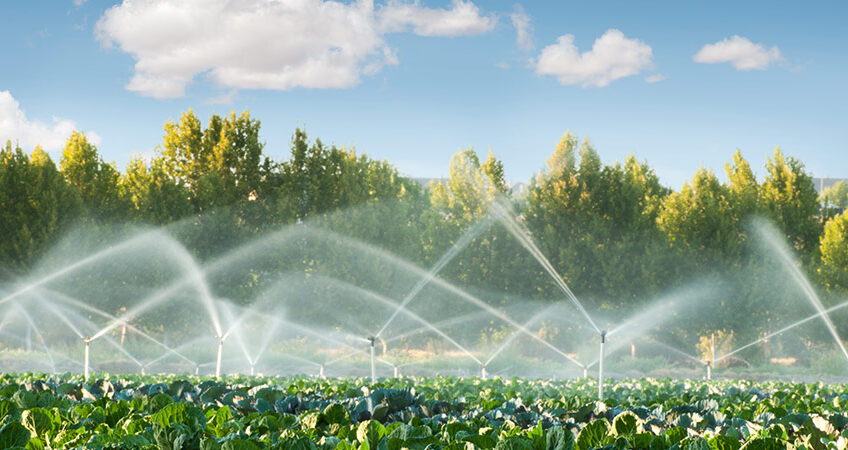Irrigating a farm can double the amount of food it produces. But even with that potential, 80 percent of farmland worldwide is not irrigated, says the UN Food and Agriculture Organization. Part of the problem may be the high cost of irrigation equipment. Also, the prospect of wasteful irrigation techniques raises the specter of environmental damage including water shortages, erosion, and soil salinization.
Irrigation methods have been around for thousands of years—as long as we’ve had the ability to grow our own crops—and they vary in how they obtain and disperse the water. Here are the different types of irrigation systems, how they work, and the benefits of each:
DRIP IRRIGATION
Drip irrigation is quickly gaining popularity as a low-cost and water-saving technique. At its core, it is a network of perforated tubes linked to a water source. The water flows through the tubes and trickles out of the perforations onto the soil. Many versions installed on small farms are gravity-driven, with the water stored in a tank raised above the farm so the water can flow through the tubes below.
Variations abound. A handful of organizations have refined and simplified the hardware to reduce costs.
TREADLE PUMPS
Part of the challenge of irrigation is often how to draw water from a well or a nearby stream to the field. Diesel pumps are expensive, but fortunately, people have been pumping water since long before the advent of the diesel engine. Low-cost, human-powered designs are at work on farms worldwide. Farmers bobbing up and down in their fields on a machine that looks like a stair stepper are treadle-pumping water onto their crops. The pumps use leg power to move pistons and create suction that draws water through a hose from a well, a stream or another source. Some are compact, steel machines, and others are handmade with treadles cut from local woods such as bamboo and other materials.
SPRINKLER IRRIGATION
Sprinkler irrigation is a method of applying water to the land in a manner that mimics natural rainfall. Water is distributed through a system of pipes, usually by pumping, and is then sprayed into the air through sprinklers that break up the water into small drops that uniformly fall to the ground.
The benefits of sprinkler irrigation include:
•Suitable for varying sizes of land—both large and small plots.
•Better able to direct water flow to specific areas of a property, avoiding water loss.
•Ability to administer fertilizers and chemical treatments through the system for even application.
SUBSURFACE IRRIGATION
Subsurface irrigation is similar to the drip/trickle method in that it distributes water through tubes and emitters. But as you can probably guess by the name, the tubes are buried below the surface of the ground. Developed in the 1960s in Israel, where water tends to be scarce, this system works best for areas that are arid, hot, windy, or have sandy soil types.
The benefits of subsurface irrigation include:
•Saves water by eliminating surface water evaporation in hot and arid conditions.
•Reduces the number of weeds because water is not on the soil surface where most weed seeds germinate.
•Prevents damage from animals or machinery because the system is below ground.
IRRIGATION TECHNOLOGY ADVANCES
New technology is regularly revealed as environmental needs change and the U.S. takes a harder look at water consumption. Farmers already control their irrigation systems with full-color touchscreen displays, one of a number of advanced irrigation controller technology options. Apps are also available to maximize water use.
A University of Missouri smart app can advise Missouri farmers on when to irrigate. To help farmers do a better job of managing moisture, the app uses weather conditions based on field location, evapotranspiration estimates, and NRCS soil mapping and texture data.
If You need help, Call Us or send a message.

